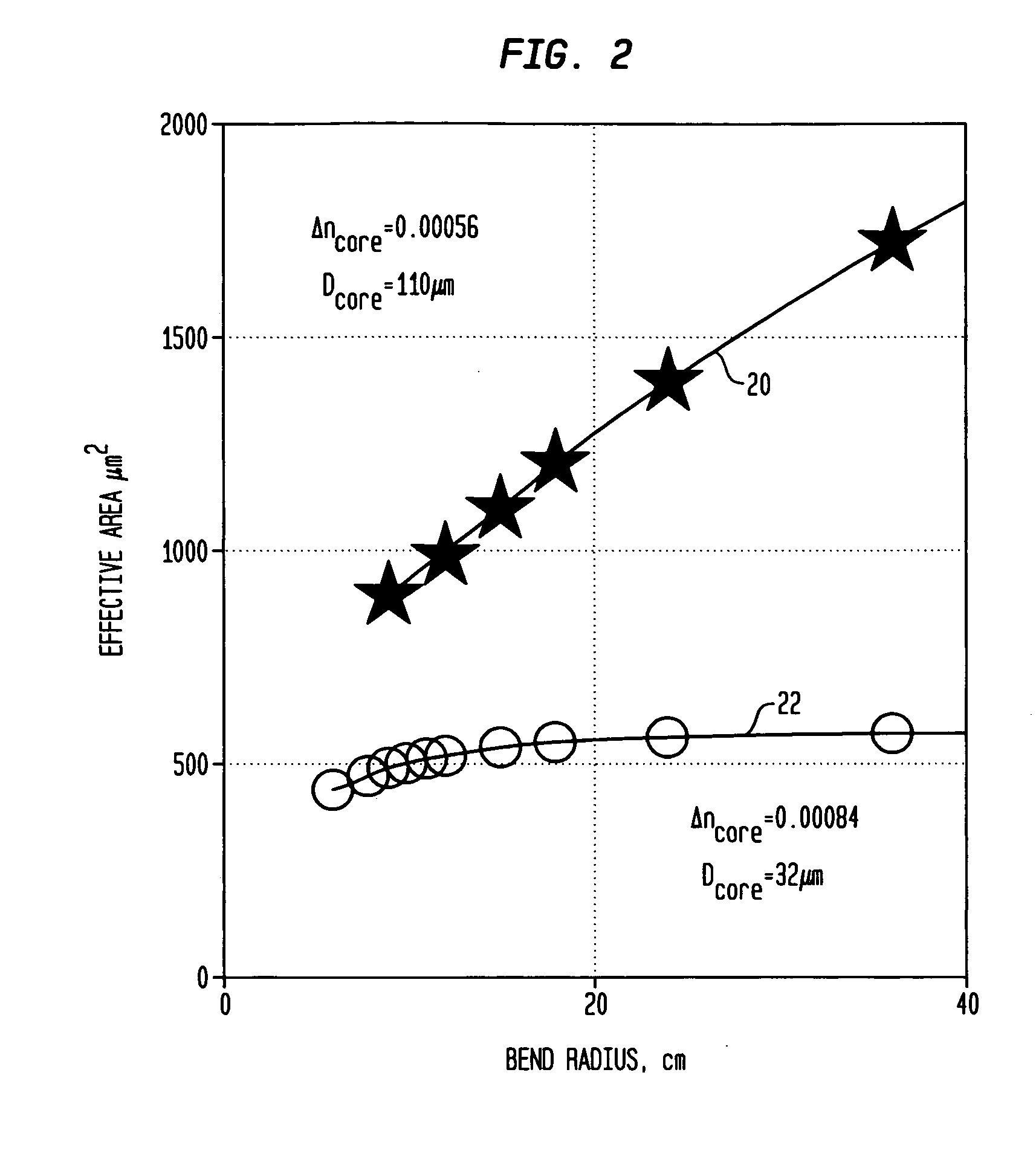Large-mode-area optical fibers with reduced bend distortion
a large-mode area, optical fiber technology, applied in the field of optical fibers, can solve the problems of reducing the effective transverse mode area of lma optical fibers, reducing the interaction of fundamental transverse mode with the gain region in gain-producing lma fibers, and also significantly reducing the effective transverse mode area. , to achieve the effect of reducing the effective transverse mode area, reducing the interaction, and improving performan
- Summary
- Abstract
- Description
- Claims
- Application Information
AI Technical Summary
Benefits of technology
Problems solved by technology
Method used
Image
Examples
Embodiment Construction
Optical Fibers—General Considerations
[0044]Turning now to FIG. 9C, an optical fiber 90 comprises a core region 91 having a longitudinal axis 93 and a cladding region 92 surrounding the core region. The core region 91 and cladding region 92 are configured to support and guide the propagation of signal light in the core region in the direction of the axis. To this end, the index of the core region 91 (ncore=nc) is greater than that of the cladding region 92 (nclad). Preferably the core and cladding regions are configured to propagate light preferentially in the fundamental transverse mode at the center wavelength of the signal light. To this end, higher order modes (HOMs) may be suppressed by techniques well-known in the art; for example, by appropriate use of high bend loss, gain selectivity, or resonant coupling HOMs to a high-index ring. The latter is described by me in copending patent application Ser. No. 11 / 818,780 (Fini 5), which was filed on Jun. 15, 2007 and is entitled “Bend...
PUM
| Property | Measurement | Unit |
|---|---|---|
| mode area | aaaaa | aaaaa |
| core diameter | aaaaa | aaaaa |
| lengths | aaaaa | aaaaa |
Abstract
Description
Claims
Application Information
 Login to View More
Login to View More - R&D
- Intellectual Property
- Life Sciences
- Materials
- Tech Scout
- Unparalleled Data Quality
- Higher Quality Content
- 60% Fewer Hallucinations
Browse by: Latest US Patents, China's latest patents, Technical Efficacy Thesaurus, Application Domain, Technology Topic, Popular Technical Reports.
© 2025 PatSnap. All rights reserved.Legal|Privacy policy|Modern Slavery Act Transparency Statement|Sitemap|About US| Contact US: help@patsnap.com



